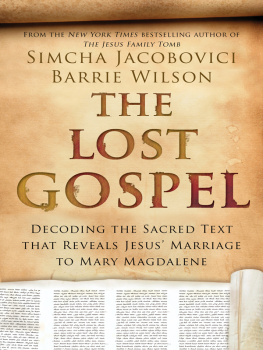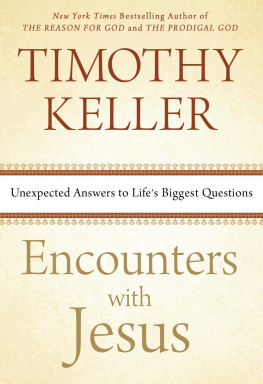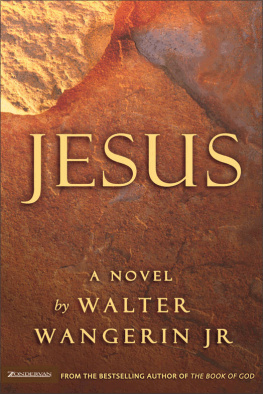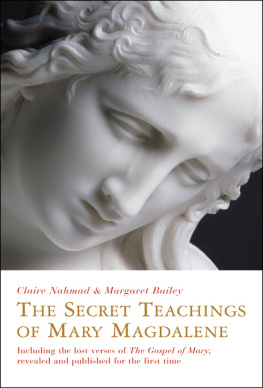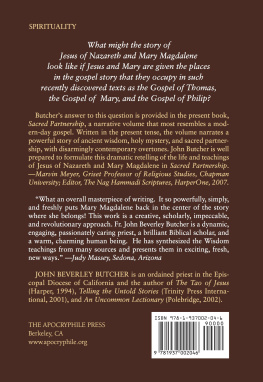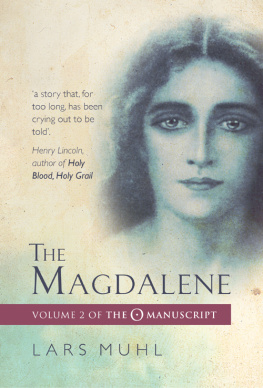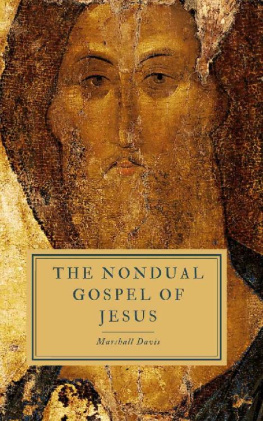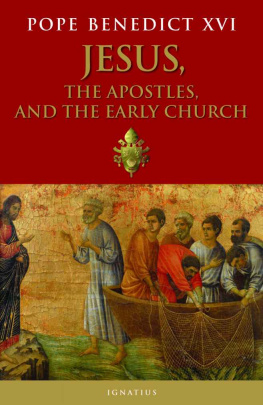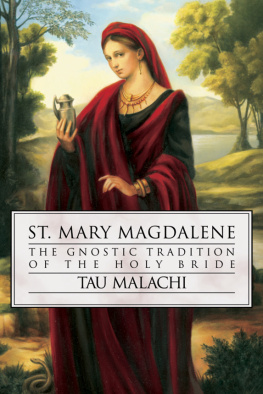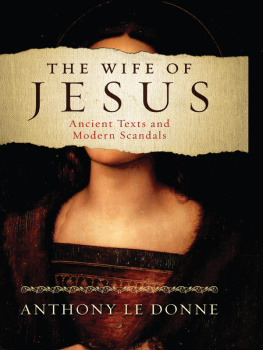
THE
LOST
GOSPEL
Decoding the Ancient Text that Reveals
Jesus Marriage to Mary the Magdalene
SIMCHA JACOBOVICI
AND BARRIE WILSON
TRANSLATION OF THE SYRIAC MANUSCRIPT BY TONY BURKE

Dedicated to Amnon Rosenfeld (zl)scholar, friend and truth seeker.
(19442014)
Simcha

For my grandchildren
Jacob, Noah, Eden, Thalia, Jackson, Ryder
and for those yet to be born
Barrie
CONTENTS

W hat you are about to read is a detective story. We have uncovered an ancient writing that is encrypted with a hidden meaning. In the process of decoding it, well take you on a journey into the world of this mysterious text. What the Vatican fearedand Dan Brown only suspectedhas come true. There is now written evidence that Jesus was married to Mary the Magdalene and that they had children together. More than this, based on the new evidence, we now know what the original Jesus movement looked like and the unexpected role sexuality played in it. We have even unraveled the politics behind the crucifixion, as well as the events and the people that took part in it.
Gathering dust in the British Library is a document that takes us into the missing years of Jesus life. Scholars believe that Jesus was born around 5 B.C.E. (B.C.) and that he was crucified around 30 C.E. (A.D.). But there is a huge gap in his biography. We know absolutely nothing about Jesus from the time he was eight days old (his circumcision, according to Jewish law), until he was in his early thirties. There is one exception. According to the Gospel of Luke (2:412:51), when he was twelve years old, Jesus traveled with his parents to Jerusalem to celebrate Passover. Thats it. Thats all we have. Otherwise, thirty years of absolute silence.
Isnt this incredible? Here is arguably the most influential individual in human history and we know nothing about him until after he starts his ministry (i.e., his public activism) at most three years before his crucifixion. But the fact is that we simply have no information about Jesus early yearshis upbringing, friends, schooling, or his interaction with family members. We have no knowledge of Jesus as a young adult. How did he gain access to the writings of the Hebrew Bible? Did the synagogue in Nazareth, a very small hamlet at the time, have scrolls of the Law and the Prophets? Who were his religious teachers? How well versed was he in Hebrew, in addition to the Aramaic that we know he spoke? Did he speak Greek, the lingua franca of the Roman world?
Jesus appears on the stage of history suddenly in the late 20s C.E. At this point, the mature Jesus announces the Kingdom of Godthat is, the advent of a qualitative transformation in human history, prophesied by the Hebrew Bible, in which justice will reign upon the earth and the worship of the one true God will be universal.
But what happened to Jesus before this sudden appearance? According to the document that we uncovered, sometime during this period he became engaged, got married, had sexual relations, and produced children. Before anyone gets his/her theological back up, keep in mind that we are not attacking anyones theology. We are reporting on a text. Theology must follow historical fact and not the other way around. Having said this, for the moment, we are not asserting that our text is historical fact. So far, we are merely stating that the Christian Bible tells us nothing about Jesus early years, and that we have discovered a text that claims that he was married and fathered children.
On a purely historical level, this really shouldnt surprise us. Marriage and children were expected of a Jewish man, then and now. If he hadnt been married, that would have caused consternation to his family, possible scandal in the community, and the New Testament certainly would have commented on itif for no other reason than to explain and defend Jesus unusual behavior. But now we have a document that claims that he was indeed married and fathered children. Not only this, our document indicates that for some of his original followers, Jesus marriage was the most important aspect of their theology.
A Sudden Insight
Before we proceed, we need to clarify one more thing: we dont claim to have excavated a long-lost text. What we do claim is to have found a centuries-old manuscript in a long-forgotten corner of a library. Such a discovery is not without precedent. For example, in 1873, in a library in Constantinople, a Greek priest found a text known as the Didache . It dates back to at least the beginning of the 2nd century, maybe even earlier, making it as old as some of the books included in the New Testament canon. In similar fashion, we have also found a text that gives us a glimpse into the earliest writings concerning Jesus and his followers. Later versions of this text have been known to a small coterie of scholars for over a hundred years. They have been baffled, however, by its message and its purpose. As a result, it has occupied esoteric corners of academic research largely unnoticed and certainly unheralded.
What we also claim is to have gone back to the texts earliest existing version, translated it, and decoded its meaning. As we will demonstrate, the document in question is a very loosely disguised Gospel. It was probably encoded by a persecuted community of Christians so as to spare their groups literature from the bonfires of their oppressors.
How did we come across the manuscript, and how did we discover its meaning?
Oddly enough, the discovery of the manuscripts meaning came through an epiphany, a sudden blast of insight. We were both in Turkey en route to Ephesus in July 2008, filming an episode on Paul for the Associated Producers History Channel documentary series, Secrets of Christianity . For our research, we had been mulling over puzzling texts from early Christianitywhat they might mean and what new insights they could give us about the various groups that followed Jesus in the earliest days of his movement. Our discussion included a little-known text that highlights two figures from the Hebrew Bible. The figures in question are Joseph, the Israelite of multi-color-coat fame who in the Book of Genesis is sold by his brothers into slavery and ends up as a ruler in Egypt, and his obscure Egyptian wife, Aseneth.
As Biblical historical researchers, we knew that the few scholars who had examined this textdubbed Joseph and Aseneth had expressed bewilderment over its meaning. We initially surmised that it might have something to do with Jesusafter all, the text was preserved in Christian monasteries. Also, the Joseph in the story is depictedin scholarly languageas a savior-figure. He is an ancient Israelite who saved his people from extinction and the Egyptians from starvation. Following up on this idea, we began to explore the possibility that the Joseph in question might be a stand-in for Jesus. Right away, the parallel was easy to see. After all, Joseph, like Jesus, was assumed dead and turned up alive; he too had humble beginnings and ended up a king of sorts. Despite the parallels, however, we realized that we had no smoking gun to justify equating the Joseph of Joseph and Aseneth with the Jesus of the Gospels.
We now turned our attention to the woman of the story. Could Josephs partner, Aseneth, turn out to be a stand-in for Jesus partner, likely Mary the Magdalene? We werent at all sure about this identification. After all, even if she was a stand-in for his wife, there are other possibilities for Jesus partner. For example, another MaryMary of Bethanyand her sister Martha were also close to Jesus. According to the Gospels, he often used their home in Bethanywhich was within easy walking distance of Jerusalemas his base of operations.
Next page
